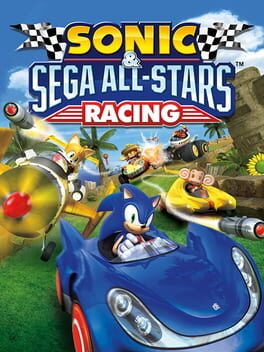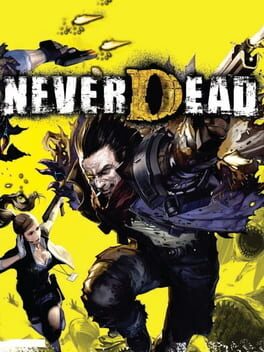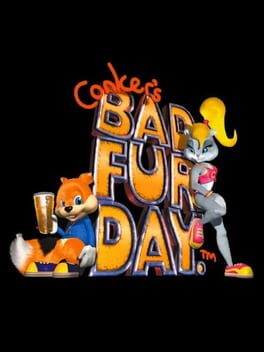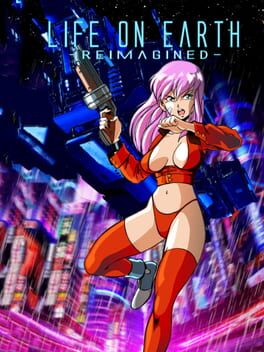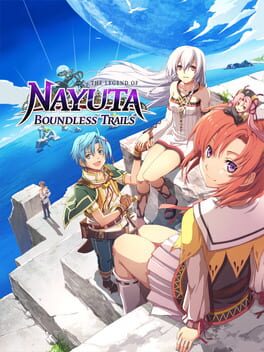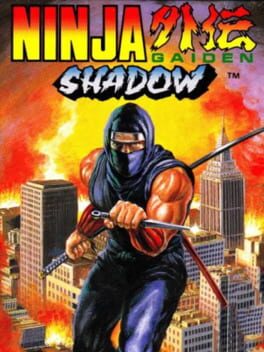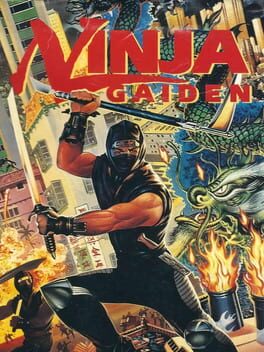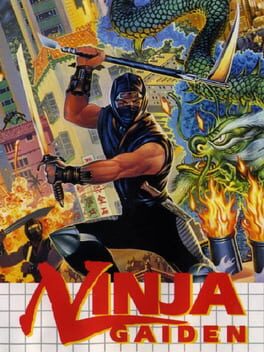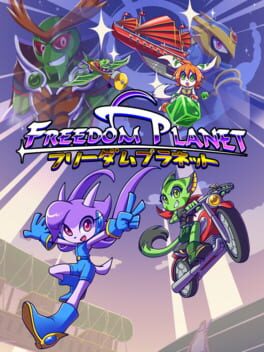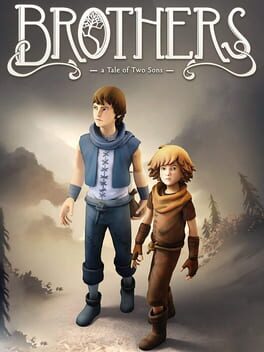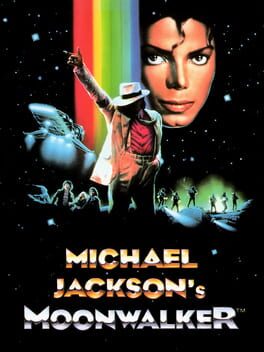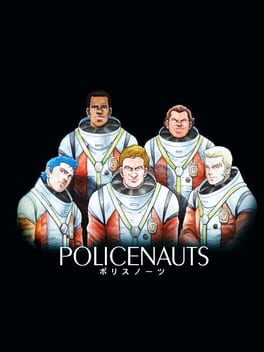Xpert74
This is an alright game. The lack of budget is noticeable (there's only about 6 different possible themes for each course, which means some racetracks look nearly identical to one another. This allows for heavy amounts of asset reuse), and I find it a bit weird that most characters you need to spend in-game currency to unlock. But it's actually pretty fun to race in - this game really emphasizes drifting and getting extra speed boosts in the process. I had a good time with the core gameplay, but this leaves a bit to be desired.
2012
I really don't know where to start with this game. Gathering my thoughts on NeverDead is a difficult one... I think what it comes down to, when all is said and done, is that NeverDead has some interesting ideas, and it's willing to experiment with bold new things (primarily, a protagonist who cannot die - and said immortality is reflected in the gameplay itself)... but the execution does leave a lot to be desired. The combat is, perhaps serviceable - generally melee combat is going to be far more effective, so your guns feel like an afterthought. But after most types of damage that the protagonist Bryce takes, he literally falls to pieces, like Humpty Dumpty, and then as a severed head, you need to slowly roll around and gather up your limbs and torso to reattach yourself, so you can go back to peak fighting shape again.
It's weird... when you're not falling apart, it can be enjoyably silly, but when you fall apart, it suddenly becomes extremely irritating. It's like the punishment you get from taking damage in say, The Legend of the Mystical Ninja (where getting hurt causes you to lose both attack power/range, and movement speed), but amplified by a thousand. Gosh this is an infuriating game a lot of the time - I'm not surprised most people hate it.
Is it worth trying? Maybe? That'll depend on how much you can tolerate occasional bullshit being tossed your way.
It's weird... when you're not falling apart, it can be enjoyably silly, but when you fall apart, it suddenly becomes extremely irritating. It's like the punishment you get from taking damage in say, The Legend of the Mystical Ninja (where getting hurt causes you to lose both attack power/range, and movement speed), but amplified by a thousand. Gosh this is an infuriating game a lot of the time - I'm not surprised most people hate it.
Is it worth trying? Maybe? That'll depend on how much you can tolerate occasional bullshit being tossed your way.
2001
I've got quite a bit of history with Conker's Bad Fur Day, despite not actually playing through it until just recently. For years I was looking forward to Twelve Tales: Conker 64, but then later found out it had been completely retooled as an edgy M-rated comedy game, so... needless to say, the final game didn't quite end up being what initially drew me to it in the first place.
Despite that though, I had a good time playing through this! I think one of the stronger things about Conker's Bad Fur Day is the general tone of the game - it has a fairly low-key vibe, feeling like a lot of the situations in-game are just created by a couple drunk people making shit up as they go, and I dig it. It's not perfect or flawless by any means (some of the jokes are better than others, to say the least... and sometimes I struggled to figure out what the game wanted me to do in a given area), but I had a pretty fun time overall, and this did genuinely make me laugh out loud on more than a few occasions.
I'm not the biggest fan of puzzles in general, so the fact this game is more puzzle-focused than the average 3D platformer, did make me a bit worried about how I'd feel about the gameplay, going into it. But generally, I was able to figure out how to deal with each obstacle or puzzle pretty reasonably. Maybe 1 or 2 difficult areas out of every 10 or so, would require me to look up help online. I do think it's generally designed pretty well - it's just sometimes a little inconsistent. I also appreciate that unlike a lot of Rare's 3D platformers, this is not a collectathon, so I'm glad I didn't have to collect a million random items over the course of my playthrough.
All in all, I'm glad I was able to finally play through Conker's Bad Fur Day. After all these years, I finally have closure.
Despite that though, I had a good time playing through this! I think one of the stronger things about Conker's Bad Fur Day is the general tone of the game - it has a fairly low-key vibe, feeling like a lot of the situations in-game are just created by a couple drunk people making shit up as they go, and I dig it. It's not perfect or flawless by any means (some of the jokes are better than others, to say the least... and sometimes I struggled to figure out what the game wanted me to do in a given area), but I had a pretty fun time overall, and this did genuinely make me laugh out loud on more than a few occasions.
I'm not the biggest fan of puzzles in general, so the fact this game is more puzzle-focused than the average 3D platformer, did make me a bit worried about how I'd feel about the gameplay, going into it. But generally, I was able to figure out how to deal with each obstacle or puzzle pretty reasonably. Maybe 1 or 2 difficult areas out of every 10 or so, would require me to look up help online. I do think it's generally designed pretty well - it's just sometimes a little inconsistent. I also appreciate that unlike a lot of Rare's 3D platformers, this is not a collectathon, so I'm glad I didn't have to collect a million random items over the course of my playthrough.
All in all, I'm glad I was able to finally play through Conker's Bad Fur Day. After all these years, I finally have closure.
(beat on 2024-02-12; did a 1CC on 02-13)
Life on Earth: Reimagined is a spinoff/prequel (as far as I can tell) to Kai Magazine Software's other game, Life on Mars. I have not played Life on Mars - I personally avoided picking it up because it's a Metroidvania, and I don't personally care much for that genre. Life on Earth, however, has a very different type of experience it's going for - that of a straightforward, stage-based 2D action-platformer.
Life on Earth: Reimagined's store description describes it as a mix of Contra, Shinobi III, and Rolling Thunder... and yeah, that's pretty accurate. Life on Earth feels specifically like it's trying to meld two different sorts of sidescrollers together - the frantic run-and-gun shooting of Contra, with the more deliberately-paced, mechanics-heavy nature of Shinobi. Those might sound incompatible, but to the developers' credit, I think they do a pretty good job of fusing the two together.
The protagonist you control, a questionably-attired woman named Dr. Zhira Kenthara, carries a gun, that functions as a standard semi-auto rifle, just like in Contra. This default gun has unlimited ammo. You can also pick up ammo for one of 3 other weapon types - a rapid-fire machine gun, a spread-firing shotgun, and an explosive grenade launcher that fires with a bit of an arc. These guns do have ammo that you need to maintain (unless playing on one of the specialty difficulty settings), so the game encourages you to frequently switch weapon types (by tapping the start button; holding the start button pauses), and save your ammo for when you really need it.
Beyond the guns, you also have a separate attack button, which always unleashes a strike at melee range. This can deal good damage, but its horizontal range is (understandably) a bit limited, so it can be risky to rely too heavily on. Like Shinobi, you can also do melee attacks with your regular fire button, if an enemy is close enough for you to do so. Other miscellaneous mechanics include (but are not limited to) dive-kicking (a classic Shinobi III move - and which can actually let you climb walls here, if you practice with them! Good stuff), and also tapping left or right twice to dash (attacking while dashing does a lunging strike, like in Shinobi III). You can also hold up to jump higher.
When it comes down to it, I do think Life on Earth: Reimagined is generally fun to play. I have not played the original Life on Earth for the MSX line of computers, so I cannot compare the two. But as a standalone experience, this is pretty solid. It's also fairly forgiving overall, given that you have infinite continues as well as a relatively lengthy health bar on most difficulties - the developers outright designed this game with the intent of encouraging players to 1CC it, and as I've personally 1CCed it myself, I can affirm that it's very doable! There are some parts of the game that are particularly brutal, however. As an example - about a third of the way in, there's an auto-scrolling section as you escape an exploding building, which is very rough, as one mistake can kill you, and your default run speed is not fast enough to outrun the explosion, which means you need to dash as frequently as possible. Pretty nasty!
I do think this game could use a bit more polish. While the art design is generally appealing, the stages don't do a good job of distinguishing which elements are part of the foreground or background, and it can be very easy to not realize that a platform is actually there. One particular stage later on has several platforms, that are all the same color as the wall/ground, and you basically just kinda have to know they're there ahead of time (or be willing to jump in various directions randomly) in order to get yourself across them. At least they don't have a bottomless pit there! But I do think the stages could utilize color more effectively, to make such elements easier to see.
I also think the pacing is... a bit weird? I do think this does a pretty good job of mixing disparate influences together overall, but it's not without its faults. Sometimes it feels like a bit of a slog to clear enough enemies away to safely proceed, and it can feel a bit awkward to shift gears back and forth between how you approach a combat encounter (switching between Contra-style “blow shit up” and Shinobi-style “take down enemies methodically” approaches), in order to skirt by as unscathed as possible.
The writing could use some work, too. The English script is... serviceable, but pretty rough. There are several typos and grammatical errors, and the localization in general feels kinda stiff and clunky. I can understand the story possibly being an afterthought (I'm assuming it was written after the fact, to tie the stages together), but it's pretty funny to see Zhira consistently fail to successfully communicate with anyone to explain what exactly is going on, or how she's not the mass murderer that she's been accused of being in the intro... as she then goes on to mass-murder a ton of people lol.
All in all, Life on Earth: Reimagined is pretty laser-focused on being a specific thing - it's a 2D action game that takes influence from multiple games the development team liked, while featuring a hot girl character to play as and maybe ogle. I don't think there's anything wrong with that, when it comes down to it - it feels like they made the game they wanted to make, and I'm happy for them. I think there's some room for improvement, but I generally enjoyed my time playing through this, and I think it was worth purchasing - I may have reason to check out Life on Mars as a result of having played this one, it so happens. I do hope they can eventually release a ROM of this digitally however - not a huge fan of having to pull out and hook up my Genesis just to play this game. Let me play this on MiSTer!
Life on Earth: Reimagined is a spinoff/prequel (as far as I can tell) to Kai Magazine Software's other game, Life on Mars. I have not played Life on Mars - I personally avoided picking it up because it's a Metroidvania, and I don't personally care much for that genre. Life on Earth, however, has a very different type of experience it's going for - that of a straightforward, stage-based 2D action-platformer.
Life on Earth: Reimagined's store description describes it as a mix of Contra, Shinobi III, and Rolling Thunder... and yeah, that's pretty accurate. Life on Earth feels specifically like it's trying to meld two different sorts of sidescrollers together - the frantic run-and-gun shooting of Contra, with the more deliberately-paced, mechanics-heavy nature of Shinobi. Those might sound incompatible, but to the developers' credit, I think they do a pretty good job of fusing the two together.
The protagonist you control, a questionably-attired woman named Dr. Zhira Kenthara, carries a gun, that functions as a standard semi-auto rifle, just like in Contra. This default gun has unlimited ammo. You can also pick up ammo for one of 3 other weapon types - a rapid-fire machine gun, a spread-firing shotgun, and an explosive grenade launcher that fires with a bit of an arc. These guns do have ammo that you need to maintain (unless playing on one of the specialty difficulty settings), so the game encourages you to frequently switch weapon types (by tapping the start button; holding the start button pauses), and save your ammo for when you really need it.
Beyond the guns, you also have a separate attack button, which always unleashes a strike at melee range. This can deal good damage, but its horizontal range is (understandably) a bit limited, so it can be risky to rely too heavily on. Like Shinobi, you can also do melee attacks with your regular fire button, if an enemy is close enough for you to do so. Other miscellaneous mechanics include (but are not limited to) dive-kicking (a classic Shinobi III move - and which can actually let you climb walls here, if you practice with them! Good stuff), and also tapping left or right twice to dash (attacking while dashing does a lunging strike, like in Shinobi III). You can also hold up to jump higher.
When it comes down to it, I do think Life on Earth: Reimagined is generally fun to play. I have not played the original Life on Earth for the MSX line of computers, so I cannot compare the two. But as a standalone experience, this is pretty solid. It's also fairly forgiving overall, given that you have infinite continues as well as a relatively lengthy health bar on most difficulties - the developers outright designed this game with the intent of encouraging players to 1CC it, and as I've personally 1CCed it myself, I can affirm that it's very doable! There are some parts of the game that are particularly brutal, however. As an example - about a third of the way in, there's an auto-scrolling section as you escape an exploding building, which is very rough, as one mistake can kill you, and your default run speed is not fast enough to outrun the explosion, which means you need to dash as frequently as possible. Pretty nasty!
I do think this game could use a bit more polish. While the art design is generally appealing, the stages don't do a good job of distinguishing which elements are part of the foreground or background, and it can be very easy to not realize that a platform is actually there. One particular stage later on has several platforms, that are all the same color as the wall/ground, and you basically just kinda have to know they're there ahead of time (or be willing to jump in various directions randomly) in order to get yourself across them. At least they don't have a bottomless pit there! But I do think the stages could utilize color more effectively, to make such elements easier to see.
I also think the pacing is... a bit weird? I do think this does a pretty good job of mixing disparate influences together overall, but it's not without its faults. Sometimes it feels like a bit of a slog to clear enough enemies away to safely proceed, and it can feel a bit awkward to shift gears back and forth between how you approach a combat encounter (switching between Contra-style “blow shit up” and Shinobi-style “take down enemies methodically” approaches), in order to skirt by as unscathed as possible.
The writing could use some work, too. The English script is... serviceable, but pretty rough. There are several typos and grammatical errors, and the localization in general feels kinda stiff and clunky. I can understand the story possibly being an afterthought (I'm assuming it was written after the fact, to tie the stages together), but it's pretty funny to see Zhira consistently fail to successfully communicate with anyone to explain what exactly is going on, or how she's not the mass murderer that she's been accused of being in the intro... as she then goes on to mass-murder a ton of people lol.
All in all, Life on Earth: Reimagined is pretty laser-focused on being a specific thing - it's a 2D action game that takes influence from multiple games the development team liked, while featuring a hot girl character to play as and maybe ogle. I don't think there's anything wrong with that, when it comes down to it - it feels like they made the game they wanted to make, and I'm happy for them. I think there's some room for improvement, but I generally enjoyed my time playing through this, and I think it was worth purchasing - I may have reason to check out Life on Mars as a result of having played this one, it so happens. I do hope they can eventually release a ROM of this digitally however - not a huge fan of having to pull out and hook up my Genesis just to play this game. Let me play this on MiSTer!
The Legend of Nayuta: Boundless Trails is an interesting game, with somewhat dubious branding. I personally am a huge fan of the Trails series, but as a Trails fan, I was actually not all that interested in Nayuta, going into it. When you consider that Nayuta as a game is
1. a spinoff
2. a spinoff that plays differently from every other game in the series (featuring real-time action instead of turn-based combat)
3. a spinoff that has barely, if any, story connection to the Trails series at large (after finishing Nayuta, at most I have a couple vague theories as to how it could... maybe connect to the other games in the series. That's it)
...then it's not too surprising that I personally wasn't that interested in Nayuta, as a game. That said, I decided to give it a try regardless, while trying to accept that Nayuta is basically its own thing entirely.
I do think the best way to approach The Legend of Nayuta: Boundless Trails, is as a standalone experience. It's not much of a Trails game, and it doesn't really need to be one. What this is, more than anything, is essentially the design philosophy and vibes of a 2D action-platformer... that just so happens to be 3D. It really has that classic feel to it (right down to the fact that you have a level-select screen to select each stage via), and as a fan of action-platformers, I really dug this! The platforming is satisfying, and the combat can be pretty engaging. There's a bit of a quirk with regard to how slowly the game unlocks new abilities & mechanics for the player (I don't know why it took several hours to be able to guard against enemy attacks... but once I finally learned that ability, it revolutionized how I approach every encounter from that point onward), but that's fairly minor. All in all, this is a blast to actually play. The great, upbeat music (as expected of a Falcom game) certainly helps, too.
Story-wise, this features a world and lore which seems mostly disconnected from the Trails series in general. Without going too into detail, I do think Nayuta does a fairly good job of gradually raising the stakes, while providing a certain degree of intrigue as to what exactly is going on, and what is going to happen next in the story. It's not the most thematically dense story Falcom has told, but it serves the game well, and kept me engaged. There's also an island town you can visit when not playing through stages, where you can upgrade your equipment or take on sidequests or talk to NPCs, which does feel a little bit more like a typical Trails experience. The fact you're returning to the same town over and over, actually reminded me of Xanadu Next more than anything. It's nice to gradually get to know the NPCs, and learn more about them and their stories and motivations over the course of the game - particularly as the main story progresses.
When it comes down to it... I like The Legend of Nayuta: Boundless Trails a lot! Perhaps moreso than I was expecting, going into it. I could compare it to the Trails series at large (if I were to do so, it would maybe be my 4th favorite Trails game), but it still feels weird to me to do so. I kinda feel like judging Nayuta as a Trails game does it a bit of a disservice. Unlike nearly every other Trails-branded game, this is absolutely one that you can jump in at any time, without worrying about story connections or plot details related to any other game in the series. At the end of the day, just enjoy Nayuta for what it is - a fun action-platformer-RPG that reflects a lot of the best qualities of Falcom's other assorted series.
1. a spinoff
2. a spinoff that plays differently from every other game in the series (featuring real-time action instead of turn-based combat)
3. a spinoff that has barely, if any, story connection to the Trails series at large (after finishing Nayuta, at most I have a couple vague theories as to how it could... maybe connect to the other games in the series. That's it)
...then it's not too surprising that I personally wasn't that interested in Nayuta, as a game. That said, I decided to give it a try regardless, while trying to accept that Nayuta is basically its own thing entirely.
I do think the best way to approach The Legend of Nayuta: Boundless Trails, is as a standalone experience. It's not much of a Trails game, and it doesn't really need to be one. What this is, more than anything, is essentially the design philosophy and vibes of a 2D action-platformer... that just so happens to be 3D. It really has that classic feel to it (right down to the fact that you have a level-select screen to select each stage via), and as a fan of action-platformers, I really dug this! The platforming is satisfying, and the combat can be pretty engaging. There's a bit of a quirk with regard to how slowly the game unlocks new abilities & mechanics for the player (I don't know why it took several hours to be able to guard against enemy attacks... but once I finally learned that ability, it revolutionized how I approach every encounter from that point onward), but that's fairly minor. All in all, this is a blast to actually play. The great, upbeat music (as expected of a Falcom game) certainly helps, too.
Story-wise, this features a world and lore which seems mostly disconnected from the Trails series in general. Without going too into detail, I do think Nayuta does a fairly good job of gradually raising the stakes, while providing a certain degree of intrigue as to what exactly is going on, and what is going to happen next in the story. It's not the most thematically dense story Falcom has told, but it serves the game well, and kept me engaged. There's also an island town you can visit when not playing through stages, where you can upgrade your equipment or take on sidequests or talk to NPCs, which does feel a little bit more like a typical Trails experience. The fact you're returning to the same town over and over, actually reminded me of Xanadu Next more than anything. It's nice to gradually get to know the NPCs, and learn more about them and their stories and motivations over the course of the game - particularly as the main story progresses.
When it comes down to it... I like The Legend of Nayuta: Boundless Trails a lot! Perhaps moreso than I was expecting, going into it. I could compare it to the Trails series at large (if I were to do so, it would maybe be my 4th favorite Trails game), but it still feels weird to me to do so. I kinda feel like judging Nayuta as a Trails game does it a bit of a disservice. Unlike nearly every other Trails-branded game, this is absolutely one that you can jump in at any time, without worrying about story connections or plot details related to any other game in the series. At the end of the day, just enjoy Nayuta for what it is - a fun action-platformer-RPG that reflects a lot of the best qualities of Falcom's other assorted series.
1992
I've heard this is based on Shadow of the Ninja, but I have not played that game, so I can't make comparisons there. As a Ninja Gaiden fan however, this made for an interesting playthrough. I think this is even easier than the Master System game, hilariously enough - I made it to the final form of the final boss in a single credit, which really does not feel like it should be possible in a game with the Ninja Gaiden branding. But regardless of the lack of difficulty present here, I do think this is fun to play. It's got a good variety of enemy encounters and level hazards, and the music can be pretty great. The grappling hook is a curious feature, though it can be a bit cumbersome to use in a pinch. Overall however, this game is solid enough for playing through in a sitting.
1991
Ninja Gaiden for Game Gear is a rather odd experience. It really doesn't feel much like a Ninja Gaiden game at all - at times I got more of a Strider vibe than anything, thanks to the fact you can attack while moving. The cramped screen dimensions means the level designs (particularly the intricacies of the platforming challenges) are kind of simplistic, which also contributes to the feeling of this game being just a bit off. It's also really weird to use your special weapons by pressing down+attack, instead of up+attack like it is in every other Ninja Gaiden platformer.
This game has the weirdest difficult curve, I swear. The first stage is a joke - especially the boss, who you can beat without taking any damage your first try, using an easily exploitable tricks that takes no effort to work out. The second stage is a bit more of a struggle - especially the second boss, who deals a ton of damage and can kill you in a couple hits. (by the way, this game's hit detection is really annoying - you have practically no i-frames, and can potentially die from one attack in a couple seconds if you get caught in an inopportune place). Then the third stage goes back to being really easy (albeit with an interesting vertical stage gimmick, feeling like an inversion of the bonus stages from Shadow Dancer on Genesis), with a third boss that is almost as easy as the first stage's? The fourth stage is a boss gauntlet, which is kind of annoying. Then the fifth and final stage can be pretty irritating to play through, followed by two easy final boss phases, and a third phase that's a bit more annoying. Oh, and you have no continues at all in this game, though there are a few extra lives to be found.
It's a weird one. This isn't a bad game, per se, and I don't dislike it, but I think it's pretty solidly the weakest Ninja Gaiden game I've played yet. As far as Ninja Gaiden games on Sega platforms are concerned, I think the Master System game delivers a stronger experience.
This game has the weirdest difficult curve, I swear. The first stage is a joke - especially the boss, who you can beat without taking any damage your first try, using an easily exploitable tricks that takes no effort to work out. The second stage is a bit more of a struggle - especially the second boss, who deals a ton of damage and can kill you in a couple hits. (by the way, this game's hit detection is really annoying - you have practically no i-frames, and can potentially die from one attack in a couple seconds if you get caught in an inopportune place). Then the third stage goes back to being really easy (albeit with an interesting vertical stage gimmick, feeling like an inversion of the bonus stages from Shadow Dancer on Genesis), with a third boss that is almost as easy as the first stage's? The fourth stage is a boss gauntlet, which is kind of annoying. Then the fifth and final stage can be pretty irritating to play through, followed by two easy final boss phases, and a third phase that's a bit more annoying. Oh, and you have no continues at all in this game, though there are a few extra lives to be found.
It's a weird one. This isn't a bad game, per se, and I don't dislike it, but I think it's pretty solidly the weakest Ninja Gaiden game I've played yet. As far as Ninja Gaiden games on Sega platforms are concerned, I think the Master System game delivers a stronger experience.
1992
Fun game. Very, very easy compared to the NES trilogy, but still worthwhile to play through. I do find it kind of unusual that the prototype version contains a (relatively) full story, while the final game strips nearly all of the story text out, while mangling what's left. It's really a shame, considering how story-driven Ninja Gaiden as a series has been from the beginning. I can say that the cutscenes here can be surprisingly bloody, compared to what was shown on the NES - though the cutscenes themselves end up being kinda bland in comparison to how tightly-paced and constructed the NES trilogy's cutscenes can be. Those are a spectacle to witness.
I do have to say that I would probably like this more if the game were both more difficult, as well as has a more brisk pace going for it. I couldn't help but notice while playing, that there were a lot of enemies that took more than one hit to kill. Considering in the NES trilogy, enemies rarely if ever took more than one hit to kill - that makes those games move at a very fast pace, while the Master System game requires you to move a little slower and more methodically in order to dispatch everyone in your path. Yet, this doesn't quite nail the deliberate precision of a series such as Shinobi, either. This isn't enough to ruin the game by any means, but I do wish the difficulty/design balance could have been managed a bit better.
I do have to say that I would probably like this more if the game were both more difficult, as well as has a more brisk pace going for it. I couldn't help but notice while playing, that there were a lot of enemies that took more than one hit to kill. Considering in the NES trilogy, enemies rarely if ever took more than one hit to kill - that makes those games move at a very fast pace, while the Master System game requires you to move a little slower and more methodically in order to dispatch everyone in your path. Yet, this doesn't quite nail the deliberate precision of a series such as Shinobi, either. This isn't enough to ruin the game by any means, but I do wish the difficulty/design balance could have been managed a bit better.
2014
(beat as Lilac; not super inclined to go back and play as the other two characters)
This is a decent 2D action-platformer, pretty heavily influenced by games like Sonic and Rocket Knight Adventures, among others. I was encouraged to give this game a try by various people, so I went ahead and gave it a shot. (I should note that I'm not a huge Sonic fan, personally, though I think some of the 2D Sonics are okay)
With that in mind, I had an okay time playing through this. Lilac has a neat moveset, with various melee attacks and means of movement to traverse obstacles (particularly her rocket attack, which is literally what Sparkster uses - the fact the recharge time for it is so slow is a drag, though). I did feel like the level design felt a bit meandering, however - I kinda wish the levels felt more focused and trimmed-down. These stages can last an incredibly long time (15-20 minutes each, generally), which feels very long to me. I also feel like the game's difficulty curve is a bit weird - the game is generally very easy, but then at a couple specific points, it suddenly becomes absurdly difficult, with little effort made to ramp things up ahead of time. At any rate, the lives system is basically pointless, so you can figure out how to proceed if you just keep trying over and over. Whether that's a good thing or not will depend on what you look for from a 2D action-platformer; I can say that I have no interest in going back to try and 1CC this game, personally.
There's also a story, which is... interesting? I get a very 2000s-era fanfic vibe from it. I was never in the Sonic fandom myself, but having been involved with various other fandoms in the 2000s, and being pretty geeky and passionate about other series' lore - I can see this game's writing and presentation really clicking with a specific kind of person. I am not that person, however.
(also, that one scene in Lilac's story (you know the one) is hilarious in a way that really does not feel intentional, lmao)
So, all in all, I appreciate Freedom Planet for what it is, even if it's pretty clearly not targeted at me. I think it's cool that something as fan-driven as this is able to exist. It could very well be worth checking out, but I think your enjoyment may hinge on how much you really enjoy Sonic.
This is a decent 2D action-platformer, pretty heavily influenced by games like Sonic and Rocket Knight Adventures, among others. I was encouraged to give this game a try by various people, so I went ahead and gave it a shot. (I should note that I'm not a huge Sonic fan, personally, though I think some of the 2D Sonics are okay)
With that in mind, I had an okay time playing through this. Lilac has a neat moveset, with various melee attacks and means of movement to traverse obstacles (particularly her rocket attack, which is literally what Sparkster uses - the fact the recharge time for it is so slow is a drag, though). I did feel like the level design felt a bit meandering, however - I kinda wish the levels felt more focused and trimmed-down. These stages can last an incredibly long time (15-20 minutes each, generally), which feels very long to me. I also feel like the game's difficulty curve is a bit weird - the game is generally very easy, but then at a couple specific points, it suddenly becomes absurdly difficult, with little effort made to ramp things up ahead of time. At any rate, the lives system is basically pointless, so you can figure out how to proceed if you just keep trying over and over. Whether that's a good thing or not will depend on what you look for from a 2D action-platformer; I can say that I have no interest in going back to try and 1CC this game, personally.
There's also a story, which is... interesting? I get a very 2000s-era fanfic vibe from it. I was never in the Sonic fandom myself, but having been involved with various other fandoms in the 2000s, and being pretty geeky and passionate about other series' lore - I can see this game's writing and presentation really clicking with a specific kind of person. I am not that person, however.
(also, that one scene in Lilac's story (you know the one) is hilarious in a way that really does not feel intentional, lmao)
So, all in all, I appreciate Freedom Planet for what it is, even if it's pretty clearly not targeted at me. I think it's cool that something as fan-driven as this is able to exist. It could very well be worth checking out, but I think your enjoyment may hinge on how much you really enjoy Sonic.
2023
I've beaten the original Resident Evil 4 over 30 times now. Needless to say, I really enjoy it, and still find reason to revisit it from time to time.
With that in mind... I personally was not demanding a Resident Evil 4 remake by any means. But, since I also didn't demand a Resident Evil 2 remake (I still think the original RE2 is excellent), yet ended up adoring the Resident Evil 2 remake when that released - I figured I kinda had to at least see what the Resident Evil 4 remake was about.
When the RE4 remake was announced, I figured it should ideally focus on two things -
1. deliver its own take on the story/gameplay of Resident Evil 4 - don't just give us a bland retread of what we've already played
2. consider revisiting some of the story elements in the original RE4 that felt kind of rushed or half-baked, so that they make more sense from a narrative perspective
I am pleased to say, that this remake delivers on both of those fronts! The Resident Evil 4 remake is not a replacement for the original, nor is it trying to be one. It is very clearly aiming to be its own thing, and as a huge fan of the original, I appreciate this all the more for that. From the de-emphasis of the knife (giving the knife a durability meter, while also adding parrying, really makes it a much more defensive mechanic, so that you cannot rely on using the knife 100% of the time to save ammo - and thus, the ammo drops are actually valuable here!), to the added layer of stealth (not a significant part of the game's design, but it is satisfying to dabble in it here and there, prior to an all-out battle igniting), to this game's removal of certain tricks that Resident Evil 4 players had grown to rely on (in the original RE4, you could initiate an animation, such as meleeing an enemy or hopping a fence, in order to get free I-frames and avoid oncoming damage, from an enemy weapon or explosive or etc. In REmake 4 however, you can actually be attacked while hopping a fence or climbing a ladder or etc., so you can't cheese these moments anymore!)... this really kept me on my toes throughout. It was very exciting.
The revised story was nice to see, as well. It still retains the cheesy over-the-top vibe of the original, while also providing added context, and recontextualizing certain character motivations and actions. The shuffling around of different story elements and scenes from the original, also helps the pacing here, and genuinely surprised me at a few points, without feeling unnecessary. It ends up feeling like it took a rough first draft, and refined it to make a much more interesting story. The original game's still very charmingly silly fun, of course, but I'm glad to have a new take on the story, here.
I should note that I played this on Hardcore difficulty, however. The game itself states that Hardcore difficulty is for people who have played the original Resident Evil 4 before, and that is just... straight-up wrong. A complete, utter lie. It's ridiculous that Capcom insists that this is the case, because your Resident Evil 4 skills will not carry over to this game, at all! I did eventually develop some strategies that helped me through to the end of the game, without lowering the difficulty - but my gosh it was brutal. There were several sequences that I spent literally hours retrying, because of how hard this got at times. Part of me wonders if I would have had a better time playing on Standard difficulty instead... but either way, I adapted. If I ever replay this, I might consider dropping it to Normal, so that I can get a feel for the default difficulty here. If I get to the point where I'm replaying this a lot, and starting to find the lower difficulties too easy, then I might consider trying Hardcore again, or even Professional difficulty. We'll see.
But at any rate - REmake 4 is excellent. I highly recommend it to anyone who's looking for a new kind of Resident Evil 4 experience. Now I just hope that Capcom goes back and actually remakes a game that wasn't very good in the first place, like Code Veronica. I really hope Capcom doesn't skip that again in favor of just remaking Resident Evil 5 or something. But we'll see...
With that in mind... I personally was not demanding a Resident Evil 4 remake by any means. But, since I also didn't demand a Resident Evil 2 remake (I still think the original RE2 is excellent), yet ended up adoring the Resident Evil 2 remake when that released - I figured I kinda had to at least see what the Resident Evil 4 remake was about.
When the RE4 remake was announced, I figured it should ideally focus on two things -
1. deliver its own take on the story/gameplay of Resident Evil 4 - don't just give us a bland retread of what we've already played
2. consider revisiting some of the story elements in the original RE4 that felt kind of rushed or half-baked, so that they make more sense from a narrative perspective
I am pleased to say, that this remake delivers on both of those fronts! The Resident Evil 4 remake is not a replacement for the original, nor is it trying to be one. It is very clearly aiming to be its own thing, and as a huge fan of the original, I appreciate this all the more for that. From the de-emphasis of the knife (giving the knife a durability meter, while also adding parrying, really makes it a much more defensive mechanic, so that you cannot rely on using the knife 100% of the time to save ammo - and thus, the ammo drops are actually valuable here!), to the added layer of stealth (not a significant part of the game's design, but it is satisfying to dabble in it here and there, prior to an all-out battle igniting), to this game's removal of certain tricks that Resident Evil 4 players had grown to rely on (in the original RE4, you could initiate an animation, such as meleeing an enemy or hopping a fence, in order to get free I-frames and avoid oncoming damage, from an enemy weapon or explosive or etc. In REmake 4 however, you can actually be attacked while hopping a fence or climbing a ladder or etc., so you can't cheese these moments anymore!)... this really kept me on my toes throughout. It was very exciting.
The revised story was nice to see, as well. It still retains the cheesy over-the-top vibe of the original, while also providing added context, and recontextualizing certain character motivations and actions. The shuffling around of different story elements and scenes from the original, also helps the pacing here, and genuinely surprised me at a few points, without feeling unnecessary. It ends up feeling like it took a rough first draft, and refined it to make a much more interesting story. The original game's still very charmingly silly fun, of course, but I'm glad to have a new take on the story, here.
I should note that I played this on Hardcore difficulty, however. The game itself states that Hardcore difficulty is for people who have played the original Resident Evil 4 before, and that is just... straight-up wrong. A complete, utter lie. It's ridiculous that Capcom insists that this is the case, because your Resident Evil 4 skills will not carry over to this game, at all! I did eventually develop some strategies that helped me through to the end of the game, without lowering the difficulty - but my gosh it was brutal. There were several sequences that I spent literally hours retrying, because of how hard this got at times. Part of me wonders if I would have had a better time playing on Standard difficulty instead... but either way, I adapted. If I ever replay this, I might consider dropping it to Normal, so that I can get a feel for the default difficulty here. If I get to the point where I'm replaying this a lot, and starting to find the lower difficulties too easy, then I might consider trying Hardcore again, or even Professional difficulty. We'll see.
But at any rate - REmake 4 is excellent. I highly recommend it to anyone who's looking for a new kind of Resident Evil 4 experience. Now I just hope that Capcom goes back and actually remakes a game that wasn't very good in the first place, like Code Veronica. I really hope Capcom doesn't skip that again in favor of just remaking Resident Evil 5 or something. But we'll see...
Really good cinematic, narrative-driven experience. It kinda makes me think of cinematic platformers like Another World, though thankfully this lacks the trial-and-error frustration of games like Another World. I did unfortunately had a couple parts of Brothers spoiled for me, years and years ago – but I still ended up really enjoying it, nonetheless; I ended up crying a bunch. The way this game interweaves its storytelling with its game design is incredibly effective; the latter elevates the former, to great effect. Glad I got to finally play it.
Kinda curious now about A Way Out and It Takes Two.
Kinda curious now about A Way Out and It Takes Two.
Very engaging horror/adventure/romance experience. This game makes the simple act of running around talking to NPCs feel exciting and intriguing throughout. The presentation is also top-notch, with a gorgeous soundtrack and art style that combines hand-painted backgrounds with 2D pixel-art sprites. It all comes together quite nicely.
There are maybe a couple minor nitpicks I have - mostly connected to the way the witching hour segments work (it can be annoyingly vague to figure out how to proceed at times, as well as irritating to deal with certain enemies - thankfully a recent patch made this less painful to deal with), as well as how the overall collection of endings are grouped up/constructed. I also wish the game let you fastforward text more consistently.
But really, as an overall experience, I had a great time going through this. It weaves both charming, uplifting moments together with truly horrific, disturbing scenes, and keeps you guessing what will happen next. I think it's well worth giving a shot, if you're prepared.
(I got 100% achievements/all endings)
There are maybe a couple minor nitpicks I have - mostly connected to the way the witching hour segments work (it can be annoyingly vague to figure out how to proceed at times, as well as irritating to deal with certain enemies - thankfully a recent patch made this less painful to deal with), as well as how the overall collection of endings are grouped up/constructed. I also wish the game let you fastforward text more consistently.
But really, as an overall experience, I had a great time going through this. It weaves both charming, uplifting moments together with truly horrific, disturbing scenes, and keeps you guessing what will happen next. I think it's well worth giving a shot, if you're prepared.
(I got 100% achievements/all endings)
An early notable license for Sega, which culminated in a series of games that will likely never be rereleased.
Moonwalker for Genesis is alright, I'd say. It's basically a Shinobi game, except a little on the easier side (at least, until you start encountering Thriller zombies), and somewhat slower in pace. The FM synth renditions of Michael Jackson's songs sound alright, and there's a decent amount of enemy variety here. The controls sometimes felt a bit awkward to me however, and some enemies are particularly annoying to deal with (the aforementioned Thriller zombies) – especially considering you have to defeat some of them dozens or hundreds of times by the end of the game.
Overall – this is okay. Definitely a standout historical piece – a snapshot in time, when Michael Jackson was arguably at the peak of his popularity, and lent his likeness and feedback to a game for Sega's up and coming system. I don't think this is a must-play, but it's an interesting curiosity.
Moonwalker for Genesis is alright, I'd say. It's basically a Shinobi game, except a little on the easier side (at least, until you start encountering Thriller zombies), and somewhat slower in pace. The FM synth renditions of Michael Jackson's songs sound alright, and there's a decent amount of enemy variety here. The controls sometimes felt a bit awkward to me however, and some enemies are particularly annoying to deal with (the aforementioned Thriller zombies) – especially considering you have to defeat some of them dozens or hundreds of times by the end of the game.
Overall – this is okay. Definitely a standout historical piece – a snapshot in time, when Michael Jackson was arguably at the peak of his popularity, and lent his likeness and feedback to a game for Sega's up and coming system. I don't think this is a must-play, but it's an interesting curiosity.
1988
Gain Ground is a very unusual game, that can be hard to really understand if you don't know what you're getting yourself into. However, once you understand how it works, and the design philosophy going into it, I think it actually becomes a pretty fascinating experience. I feel like the simplest way to describe this, is that it takes the design philosophy of a strategy game like Fire Emblem, and melds that into the context of a run-and-gun shooter.
I like this quite a bit, but at times I do find it a little bit bullshit in its design. It does demand a lot of patience from the player, but if you can deal with it, you will find a surprisingly rewarding experience. The Rambo and viking guys are the best units, by far.
I like this quite a bit, but at times I do find it a little bit bullshit in its design. It does demand a lot of patience from the player, but if you can deal with it, you will find a surprisingly rewarding experience. The Rambo and viking guys are the best units, by far.
1994
Generally a good story-driven experience, although the perviness can be a bit overbearing and some aspects of the plot are a bit too easy to predict. I feel like some things about this are better than in Snatcher, while other things I think Snatcher handled better. At the end of the day, both Snatcher and Policenauts are good, if flawed, adventure games.
I did get to play this one using a Virtua Gun on my CRT TV, so that's pretty exciting! It was fun to play that way, although I had trouble doing any of the target practice stuff to a satisfactory degree. The amount of shooting in the endgame is also excessive enough that I felt my trigger finger really wearing out by the end, so be prepared for what you're getting yourself into if you go that route!
I did get to play this one using a Virtua Gun on my CRT TV, so that's pretty exciting! It was fun to play that way, although I had trouble doing any of the target practice stuff to a satisfactory degree. The amount of shooting in the endgame is also excessive enough that I felt my trigger finger really wearing out by the end, so be prepared for what you're getting yourself into if you go that route!
